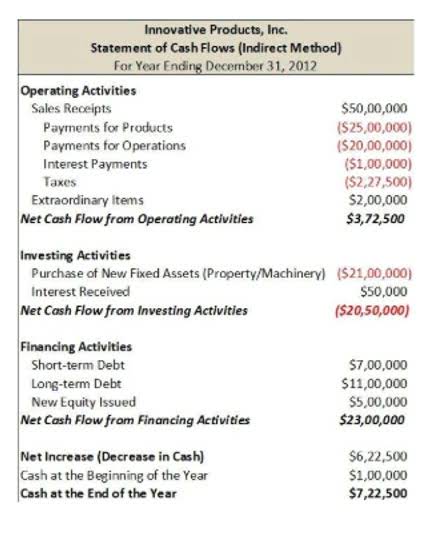
Once the excess inventory reserve has been calculated, it is recorded as a contra-asset account on the balance sheet. The reserve is then used to offset any losses that may be incurred due to the disposal or write-off of excess inventory. The business will then continue to monitor its inventory levels and adjust the reserve as necessary. Examples of expense accounts include cost of goods sold, inventory obsolescence accounts, and loss on inventory write-down. A contra asset account may include an allowance for obsolete inventory and an obsolete inventory reserve.
Why is inventory obsolescence a problem for businesses?

Let’s assume that a business is engaged in producing electronic goods and it has an inventory of electronic components that have been in stock for over two years. The business is now concerned that these electronic components may have lost their value and may no longer be usable in their production process. To recording transactions determine whether an inventory obsolescence reserve is needed, the business should review the inventory to determine whether it is still usable. An inventory obsolescence reserve is a provision created by a business to account for the potential loss in inventory value due to obsolescence or spoilage.
- The journal entry is debiting inventory reserve and credit inventory, the difference between inventory loss and reserve needs to debit to expense (inventory write down).
- Obsolete inventory ties up capital, increases storage costs, and requires write-downs or write-offs, which reduce net income.
- He has been a manager and an auditor with Deloitte, a big 4 accountancy firm, and holds a degree from Loughborough University.
- There are a number of reasons why a company doesn’t want to hang onto obsolete inventory.
- Inventory obsolescence is often caused by businesses failing to understand the product life cycles of the items they stock and consequently missing the warning signs of those nearing their end.
- At the end of the year, company has to record the inventory obsolete which equals 5% of the total inventory.
A detailed example of how to identify when an inventory Shrinkage reserve is needed and how to calculate one
While the annual review is required for accounting compliance, the quarterly review can help management identify ordering issues that increase the chance of products becoming obsolete. This is an example where, even though GAAP does not require more frequent analysis, it may be good for the company to address this issue more often than required. These items have typically been replaced in the marketplace by more advanced or inexpensive goods, so there is no longer any demand for them. Since these goods cannot be used, their cost is either written off or written down. A write off completely eliminates the inventory asset from the accounting records, while a write down reduces the amount of the recorded asset to the price at which it can still be sold. In anticipation of this, the company will create an entry on the balance sheet called inventory reserve.
Understanding Inventory Write-Offs

This method involves analyzing the age of the inventory and determining a percentage of its value that is likely to become excess based on the age of the inventory. The percentage is then multiplied by the total inventory cost to arrive at the amount of the excess inventory reserve. This method involves estimating the percentage of sales that reserve for obsolete inventory will be lost due to excess inventory. The percentage of sales is then multiplied by the total sales revenue to arrive at the amount of the excess inventory reserve.

Understanding Inventory Reserves
- In this podcast episode, we discuss the reserve for obsolete inventory.
- They may be in the form of holding costs, storage costs, shrinkage costs, or any type of cost arising from a decrease in the value of the inventoried assets.
- But – and it’s a large but – only if management is willing to part with the inventory.
- The company may be purchasing excessive or duplicate inventory because it’s lost track of certain items or it’s using existing inventory inefficiently.
- He is a certified public accountant, graduated summa cum laude with a Bachelor of Arts in business administration and has been writing since 1998.
- One is to have an experienced group of users examine the entire inventory on an ongoing basis and figure out exactly which items are obsolete.
- So when this journal reduces both accounts, it will not impact the total amount.
Even though inventory costs must be adjusted down to the lower of cost or market, this does not mean that inventory costs are adjusted upward if the price recovers. GAAP specifically prohibits companies from writing up the cost of inventory in almost all circumstances. The $1,500 net value of the inventory less the $800 proceeds from the sale has created an additional loss on disposal of $700, which is charged to the cost of goods sold account.
- The transaction will not impact the expense account on income statement as the company has already estimated and recorded the expense.
- Accurately tracking, valuing, and managing inventory ensures financial statements reflect its true economic value.
- Most companies use the cost of goods sold in the account to record this expense, but they may separate subaccounts for easy control.
- You can set the default content filter to expand search across territories.
- Inventory reserve is an estimation of future inventory spoilage based on the company’s past experiences.
- The reason for doing so is to show investors a consistent level of profitability over time, even when this is not really the case.

First, when inventory becomes obsolete, it must be written down or written off. This adjustment is recognized as a loss on the income statement, directly reducing net income. The write-down or write-off is recorded as an expense, meaning the loss is recognized in the current period. Obsolete inventory is inventory that a company still has on hand after it should have been sold. When inventory can’t be sold in the markets, it declines significantly in value and could be deemed useless to the company. To recognize the fall in value, obsolete inventory must be written-down or written-off in the financial statements in accordance with generally accepted accounting principles (GAAP).

WHY CHOOSE US
QUANTITY GUARANTEE
100% Vietnamese human hair
GLOBAL SHIPPING
Fastest and Safest Delivery Worldwide with Trusted couriers
RETURNS & EXCHANGES
Available returns and exchanges policies applied
QUALITY
Quality is king